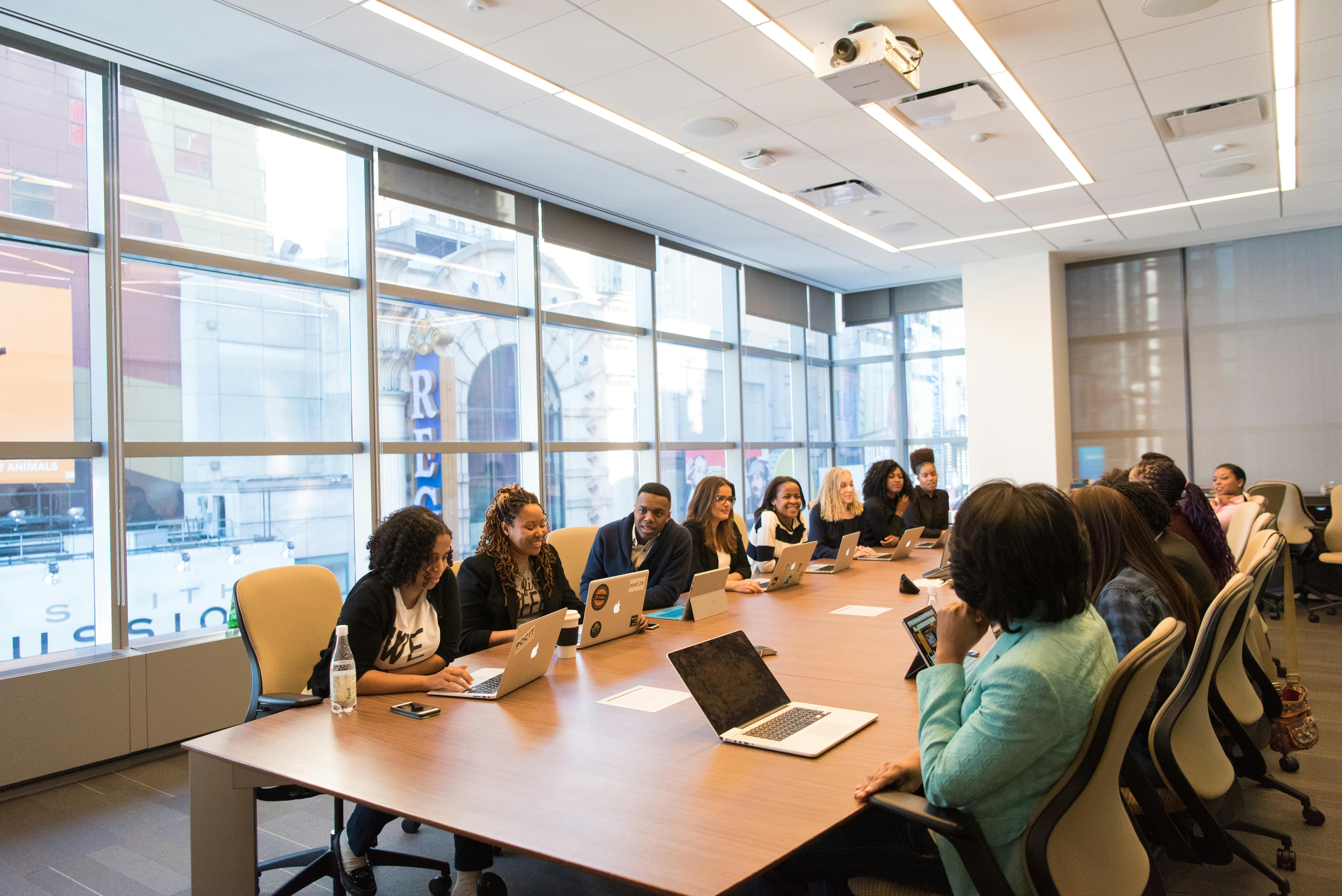A Complete Guide On The Dress Code For A Job Interview For Males And Females

Dress To Impress! First impressions are always important and the way you look and walk through that door depicts your personality and how confident you are to ace this interview. Your attire and how you carry yourself is the first thing that a hiring manager would notice and hence it’s crucial to know the appropriate way to dress yourself up for an interview. Your attire can communicate a lot about your personality, professionalism, and attention to detail. Kabir Karan, Director, KARAN & MOIN, shared with HT Lifestyle.
This blog will provide you with a complete guide on the dress code that is considered suitable for a job interview.
Navigating the Right Dress Code
“Most employers still expect men and women to show up to the job interview in a suit" said Rahm, HR senior manager at Clark Nuber, a professional services firm. “Recruiters and HR managers do notice how polished the applicant is. We think, ‘Are they in a nice suit that fits them well?’ Would they be a good representative of our company? I don’t get a first impression based on handbags or luxury brands, but some of the interview team does notice that.”
Before you dive into the selection of your clothes, there are certain points that you should consider prior to making the decision of what to wear. These points are discussed below:
Research About the Company
Learn about the company’s culture through its website, employee reviews, and social media profiles. There are various company cultures and industry standards due to which it becomes difficult to determine the right dress code. Common dress codes for different industries vary from each other. For example, the corporate and law industry requires more formal outfits than other industries like tech, creative, and start-ups.
Understand Different Dress Codes
Explore the different professional dress codes established. A professional dress code refers to the standards of appropriate attire at a formal work setting. These dress codes vary with different companies and industries but they generally include the following codes:
- Business Casual: It is one of the most common dress codes in the professional world. It is comparatively less formal than the traditional formal wear like suits but more polished than casual attires. Its main purpose is to look professional without sacrificing your comfort.
- Business Formal: This dress code is meant to be for the most formal settings such as high-level corporate meetings, award ceremonies, special dinners, etc. This is the most professional and includes tailored suits and ties.
- Casual: It refers to the clothing that is comfortable and relaxed. This is the least formal dress code among others. Casual wears might be informal yet they must look tidy and professional.
- Smart Casual: It is a blend of casual and formal elements that provides a comfortable yet stylish look. It is an approach that mixes trends with classic staples. It looks clean, professional, not too formal and interesting at the same time. According to Forbes, “It has become one of the most standard ways to dress in today’s workplace, and you could say its trajectory reflects our changing attitudes towards how we work.”
Business formal is considered to be the most suitable dress code for a job interview, whether male or female. It depicts your respect for the opportunity. It is always better to dress more formally than the company’s standard dress code when you go for an interview.
Choose a Formal Approach
Whenever you have a doubt regarding the appropriate dress code, it’s always better to be slightly overdressed rather than being underdressed. Wearing a business professional outfit shows that you respect the opportunity and are taking it seriously.
Grooming and Accessories
Good grooming is essential for looking professional as it creates a positive first impression, reflects attention to detail, and conveys respect for oneself and others. Pay attention to hygiene. Wear tidy and ironed clothes. Also, keep your hair and beard trimmed. As for accessories, avoid flashy jewellery. Instead, wear a classic watch. Limit the fragrance and avoid strong scents.
Virtual Interviews
Adapt to the virtual interview environment due to the rise in remote work. Dress as you would for a personal interview. Make sure you have a stable network connection, clean background, and enough lighting in advance.
Dress Code for Males
Dressing appropriately for a job interview is crucial as it can influence the first impression you make on your potential employer. Business formals are the most appropriate dress code for a job interview as it shows your seriousness and respect that you have for the company and the opportunity. Here are some options in business formals and guidelines for males to consider when dressing for an interview:
- Suits: Dark coloured suits such as navy blue, black, charcoal with matching trousers are the most common outfits worn in the most formal settings.
- Shirts: Wear a buttoned-up collared shirt. Refrain from bold and bright colours. Prefer light colour shades like white and beige.
- Ties: Shirts are paired with matching ties. Wear solid colours and subtle patterns to look tidy and professional.
- Shoes: Brown or black coloured polished leather shoes will complement your formal attire and make you look smart.
- Accessories: Style your outfit with a classic watch and a belt that matches your shoes.
- Condition: Regardless of the dress code, clothing should always be clean, ironed, well-fitted, and in good condition.
- Grooming: Personal grooming, including hair, nails, and beard should be trimmed properly and appropriate for the professional setting.
Business Casuals and Casuals are the dress codes that are rarely acceptable in a job interview except for some creative and very informal settings and company environments. Options in business casuals and casuals include wearing casual shirts like polo shirts and collared shirts, V-neck sweaters. For bottomwear, one can consider casual trousers, chinos, jeans without any rips or distressing. Wear loafers, neat sneakers, casual shoes as footwears that are clean, polished and in good condition.
Dress Code for Females
Dressing appropriately for a job interview is just as important for females as it is for males, as it helps create a positive first impression. Business Formals are the most suitable in case of females as well. Here are some guidelines for females to consider when dressing for an interview:
- Suits: Wear tailored skirts or pants suits in dark colours such as black, navy, or charcoal.
- Blouses: You can also wear dress shirts or conservative blouses.
- Pants: Pants should be well-fitted and not too tight or too loose.
- Dresses/Skirts: Style knee-length or longer dresses with a blazer. If wearing a skirt, it should be knee-length or just below the knee.
- Stockings: Consider stockings if you are wearing a dress or a skirt.
- Footwear: Closed-toe, low- to mid-heel pumps in black or brown.
- Accessories: Wear minimal and elegant such as simple jewellery and a professional handbag.
- Condition: As with mens dress codes, clothing should be clean, well-fitted, and in good condition.
- Grooming: Personal grooming, including hair, nails, and makeup, should be neat and appropriate for the professional setting.
Though casuals are unacceptable still they can be worn in the creative and informal company environment. Options in that case include wearing sweaters, polo shirts, dress shirts. For bottoms one can wear dress pants, tailored trousers, well-fitted jeans. Style it with casual loafers, flats, low heels or clean sneakers. Females generally have more options when it comes to dressing for an interview as compared to males. This variety allows women to express their personal style while still maintaining a professional appearance.
Conclusion
In conclusion, dressing appropriately for a job interview is crucial for both males and females as it reflects professionalism, respect for the company, and a serious attitude towards the position. For males, this typically means opting for a business formal or business professional dress code including a dark suit, a dress shirt, a conservative tie, and polished dress shoes. For females, a tailored suit, a conservative blouse, a professional dress, and closed-toe shoes are recommended. Dressing appropriately not only creates a positive first impression but also boosts confidence and conveys readiness to be part of a professional environment. Research the company’s culture and dress code, if possible, and aim to dress one level above their usual attire to show respect and seriousness about the opportunity.

Somya Shukla
Table of Contents
- 1. Navigating the Right Dress Code
- 2. Choose a Formal Approach
- 3. Grooming and Accessories
- 4. Virtual Interviews
- 5. Dress Code for Males
- 6. Dress Code for Females
- 7. Conclusion
Recent Blogs

Athmi Shetty • 13 Dec,2025
Job Search Sites in India for Your Career Success
Job Search Sites in India for Your Career Success Finding work now might seem tough – after all, heaps of grads plus skilled folks chase the same roles daily. Still, thanks to India...

Athmi Shetty • 12 Dec,2025
Best Job Portals in India for 2025 (Ranked with Pros & ...
Top jobs site in India by 2025 offer real postings, clever match systems, options for new grads, while backing private plus govt work. One such site, Jobzshala - sometimes called Jobz - w...

Athmi Shetty • 11 Dec,2025
Best Job Portals For Job Seekers | How To Find A Job In...
Top job sites in India by 2025 use smart tech to match candidates, show real postings, while offering solid help with interviews - speeding up hiring way more than old-school ways. Instead o...



